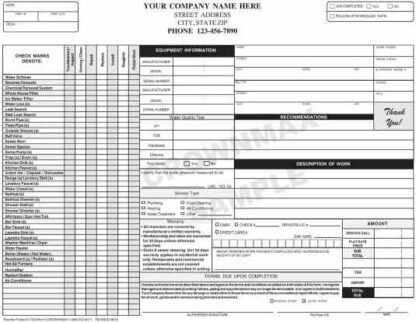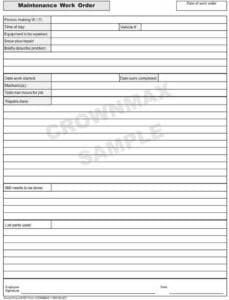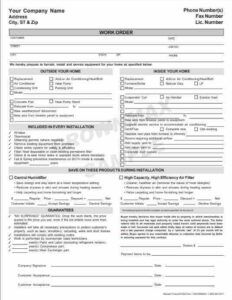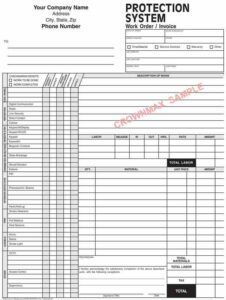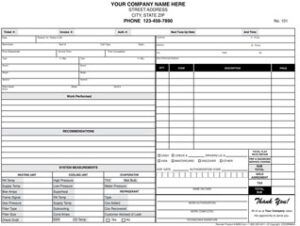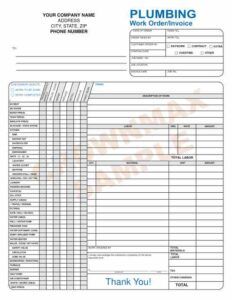Work Order Forms
For maintenance and repair operations
Work order forms are documents used to request and track work to be completed by a specific department or individual. These forms are commonly used in the maintenance, repair, and construction industries, as well as in the provision of services such as cleaning or security. They are essential for ensuring that work is performed correctly, on time, and within budget. Work order forms provide a clear and organized way to request work, track progress, and document completion. They are also important for keeping records of costs and materials used. Overall, work order forms play a critical role in the efficient operation of any organization that relies on external services or internal maintenance and repair.
The purpose and importance of work order forms
The primary purpose of work order forms is to provide a clear and detailed request for work to be performed. They are used for communicating what needs to be done, by whom, and when. This ensures that everyone involved in the process, from the person submitting the request to the person completing the work, is on the same page. Work order forms also help to organize and prioritize work requests, making it easier for managers to plan and allocate resources effectively.
Work order forms are also important for tracking progress and documenting completion. They provide a record of the work that was requested, the cost and materials used, and any other relevant information. This documentation is essential for ensuring that work is performed correctly and on time, and it can also be used for budgeting and billing purposes.
In addition, work order forms are important for maintaining safety and compliance. They can be used to record safety hazards or potential issues and ensure that necessary precautions are taken before work is performed. They also help to ensure that work is performed in compliance with any relevant regulations.
Overall, work order forms play a critical role in the efficient operation of any organization that relies on external services or internal maintenance and repair. They help to ensure that work is performed correctly, on time, and within budget, while also providing a record of the work that was performed.
Types of Work Order Forms
There are several different types of work order forms, each designed for a specific purpose. Keep in mind they can be manual, meaning they are written manually by hand or digitally where the form is generated by a computer system:
Maintenance Work Order Forms
These forms are used to request maintenance or repair work on equipment, facilities, or infrastructure. They include details about the specific equipment or location in need of maintenance, as well as any relevant safety information.
For example, they might be used when a piece of equipment or a facility needs repairs or regular maintenance. For example, if an HVAC system needs to be serviced or a light fixture needs to be replaced in an office building, a maintenance work order form would be used to request the work.
Link to example: 3621 – Maintenance Work Order
Service Work Order Forms
These forms are used to request services such as cleaning, security, or landscaping. They include details about the scope of the work to be performed, as well as any relevant schedule or budget information.
Use them when a service such as cleaning or security is needed. For example, if a company wants to schedule weekly cleaning for their office, a service work order form would be used to request the work. Similarly, if a security guard is needed for an event, a service work order form would be used to request the service.
Link to example: 2224 – HVAC Work Order
Purchase Order Forms
Forms that are used to request the purchase of materials or equipment needed for a specific job. They include details about the materials or equipment needed, as well as any relevant budget or delivery information.
Use these forms when a company needs to purchase materials or equipment for a specific job. For example, if a construction company needs to purchase lumber for a new building, a purchase order form would be used to request the materials.
Link to example: 5212 – Protection System Work Order / Invoice
Project Work Order Forms
Project work order forms are used to request work on a specific project. They include details about the project, including the scope of the work, deadline, and budget.
They are ideal for when a specific project is to be undertaken. For example, if a company wants to renovate its office, a project work order form would be used to request the work.
Link to example: 6825 – Flat Rate Work Order / Invoice
Time and Materials Work Order Forms:
These forms are used when a work order is requested but the scope of work or the time it will take to complete the job is not known. This will allow the contractor to bill the client based on the time and materials used to complete the job.
For example, you may use these forms when the scope of work or the time it will take to complete a job is not known. For example, if a company wants to fix a leak in a pipe but it is not known how extensive the damage is until the job is started, a time and materials work order form would be used.
Link to example: 6540 – Plumbing Work / Order Invoice
These are just a few examples of the different types of work order forms that may be used in different industries and organizations. Each type of form may have slight variations depending on the specific needs of the organization or the type of work being requested.
Elements of a Work Order Form
The essential components of a work order form typically include:
Requestor Information
This includes the name and contact information of the person or department requesting the work. It may also include the date the request was submitted and any relevant account or project information.
Requestor information is used to identify the person or department requesting the work, and to provide contact information for follow-up or clarification if needed. It also helps to track who requested the work and when, which can be important for budgeting, invoicing, and accountability purposes.
Description of Work Requested
This section should provide a clear and detailed description of the work to be performed. It should include information such as the location of the work, the equipment or facility to be worked on, and a description of the problem or issue that needs to be addressed.
In this section of the form, you may provide a clear and detailed description of the work to be performed, which helps to ensure that everyone involved in the process understands the scope of the work and what needs to be done. It also helps to ensure that the work is performed correctly and in a timely manner.
Budget Information
Input any relevant budget information, such as the estimated cost of the work, any available funds, and the budget code to charge the cost in this section.
Provide information about the budget and any available funds, which helps to ensure that the work is performed within budget constraints. This also helps to track the costs associated with each work order, which can be useful for cost-benefit analysis and budget forecasting.
Priority and Due Date
In this section, you should indicate the priority of the work order and the due date of the work.
When you indicate the priority of the work order and the due date of the work, it helps to ensure that the most important work is completed first and that it is completed on time.
Approval and Signature
This portion of the form should include the names and signatures of any individuals or departments that need to approve the work order before work can begin.
The approval and signature provide a record of who approved the work order and when is important for accountability and tracking purposes. It also helps to ensure that the work order has been reviewed and approved by the appropriate individuals or departments before work begins.
Additional Information
This section may include any additional information that may be useful for the person performing the work. This may include safety hazards, special instructions, or any other relevant details.
Here is an element of the form that gives you the flexibility to write in additional information as it relates to each job. This may include safety hazards, special instructions, or any other relevant details. This helps to ensure that the work is performed safely and in compliance with any relevant regulations.
Work Completed Details
This section should include a brief description of the work done, the date it was completed, and the signature of the person who performed the work.
This helps to ensure that the work is done correctly, and on time and it also serves as a record of the work that was performed.
These are the basic components of a work order form, but depending on the organization or industry, some forms may include additional fields or information to support their specific work process.
Each element of a work order form is important for ensuring that the work is performed correctly, on time, and within budget. They also provide a record of the work that was requested and performed, which can be useful for budgeting, invoicing, and accountability purposes. Proper use of work order forms helps to ensure that work is performed efficiently and effectively.
